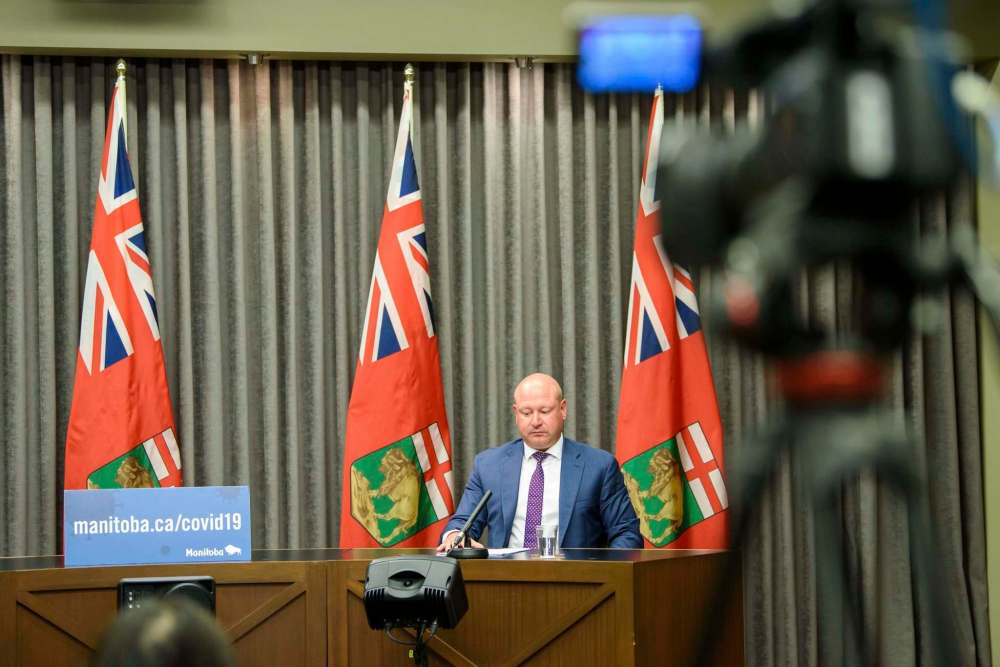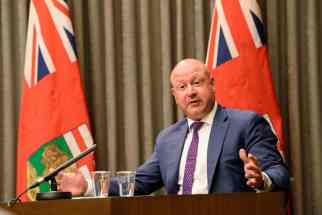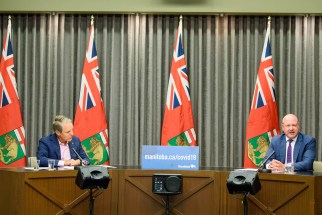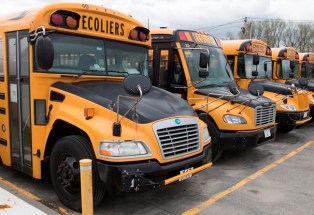Ottawa, Manitoba on same pandemic page for return to school
Read this article for free:
or
Already have an account? Log in here »
To continue reading, please subscribe:
Monthly Digital Subscription
$0 for the first 4 weeks*
- Enjoy unlimited reading on winnipegfreepress.com
- Read the E-Edition, our digital replica newspaper
- Access News Break, our award-winning app
- Play interactive puzzles
*No charge for 4 weeks then price increases to the regular rate of $19.00 plus GST every four weeks. Offer available to new and qualified returning subscribers only. Cancel any time.
Monthly Digital Subscription
$4.75/week*
- Enjoy unlimited reading on winnipegfreepress.com
- Read the E-Edition, our digital replica newspaper
- Access News Break, our award-winning app
- Play interactive puzzles
*Billed as $19 plus GST every four weeks. Cancel any time.
To continue reading, please subscribe:
Add Free Press access to your Brandon Sun subscription for only an additional
$1 for the first 4 weeks*
*Your next subscription payment will increase by $1.00 and you will be charged $16.99 plus GST for four weeks. After four weeks, your payment will increase to $23.99 plus GST every four weeks.
Read unlimited articles for free today:
or
Already have an account? Log in here »
Hey there, time traveller!
This article was published 10/08/2020 (1949 days ago), so information in it may no longer be current.
Limit sharing and require mask-wearing. Those are the key takeaways from Canada’s back-to-school guidelines, which mirror Manitoba’s for the most part — aside from the federal government’s advice students older than 10 don face coverings during the school day.
On Friday, the Public Health Agency of Canada released back-to-school guidelines that complement provincial health authority advice and stress the importance of tailoring plans to local communities.
Similar to the messaging Manitoba chief Dr. Brent Roussin has repeated since March, the recommendations ask school staff and students to stay home when sick, practice frequent hand hygiene and maintain a two-metre distance between one another — even between members of the same class and larger school cohort.

Both federal and provincial guidelines share in their support for installing age-appropriate signage, rearranging spaces, installing physical barriers where appropriate, ramping up sanitation and promoting outdoor learning.
The documents also both discourage school assemblies and allowing visitors inside school facilities.
However, Ottawa’s guidelines also get into the granular when it comes to preventing the spread of COVID-19 in schools by requiring older students to wear non-medical face masks, discouraging students from bringing cellphones and other personal items into classrooms, and assessing ventilation systems.
On the subject of ventilation, Ottawa recommends teachers hold activities — including lunch, classes and physical education — outside as often as possible, ensure ventilation systems operate properly, increase air exchanges by adjusting HVAC systems and open windows when weather permits.
“In general, outside is better than inside. Well-ventilated areas are better than poor-ventilated areas. Big crowds are not a good idea; the less crowded a room is, the better,” said Silvia Cardona, a professor of microbiology at the University of Manitoba.
Cardona said Monday an additional item to consider is how air currents work in a specific environment, and to ensure building circulation is flowing appropriately and not placing more people at risk of getting infected with droplets.
In order to prevent the spread of droplets, she is in favour of mandating face masks in schools, a policy thathas been adopted for Grade 4-12 students in Ontario and Alberta, and Grade 5-12 students in Quebec (except in classrooms). Even younger students can learn how to wear masks properly — if they are educated on how-to do so, she said.
Parents, teachers and public health experts alike are torn on whether masks should be mandated for younger students, especially considering masks might encourage students to touch their faces more often than they would otherwise.
The federal guidelines stress the importance of adopting repetitive public health measures when it comes to reopening schools, whether that be by creating hand hygiene routines or assigning seats.

While a return to classroom instruction may seem daunting, Dr. Jared Bullard said families can find confidence in rehearsing the new protocols at home in a casual way prior to Sept. 8.
“It’s kind of scary times with kids and seeing all this going on… people don’t want to get things wrong and the best way to not get things wrong is to make it routine,” said Bullard, a pediatric infectious disease expert at the Children’s Hospital in Winnipeg.
Other than that, Bullard’s recommendations to students and caregivers — drawing on his own experience as a father — is to physical distance and promote good hand hygiene.
Emerging evidence shows people of all ages carry similar viral loads of COVID-19 and can subsequently spread the virus all the same, but the current consensus is children under 10 appear to experience less severe symptoms.
Of the 558 confirmed cases of COVID-19 reported in the province to date, 3.6 per cent involve children under nine while 5.7 per cent involve youth between the ages of 10 and 19.
maggie.macintosh@freepress.mb.ca
Twitter: @macintoshmaggie

Maggie Macintosh reports on education for the Winnipeg Free Press. Funding for the Free Press education reporter comes from the Government of Canada through the Local Journalism Initiative.
Our newsroom depends on a growing audience of readers to power our journalism. If you are not a paid reader, please consider becoming a subscriber.
Our newsroom depends on its audience of readers to power our journalism. Thank you for your support.













